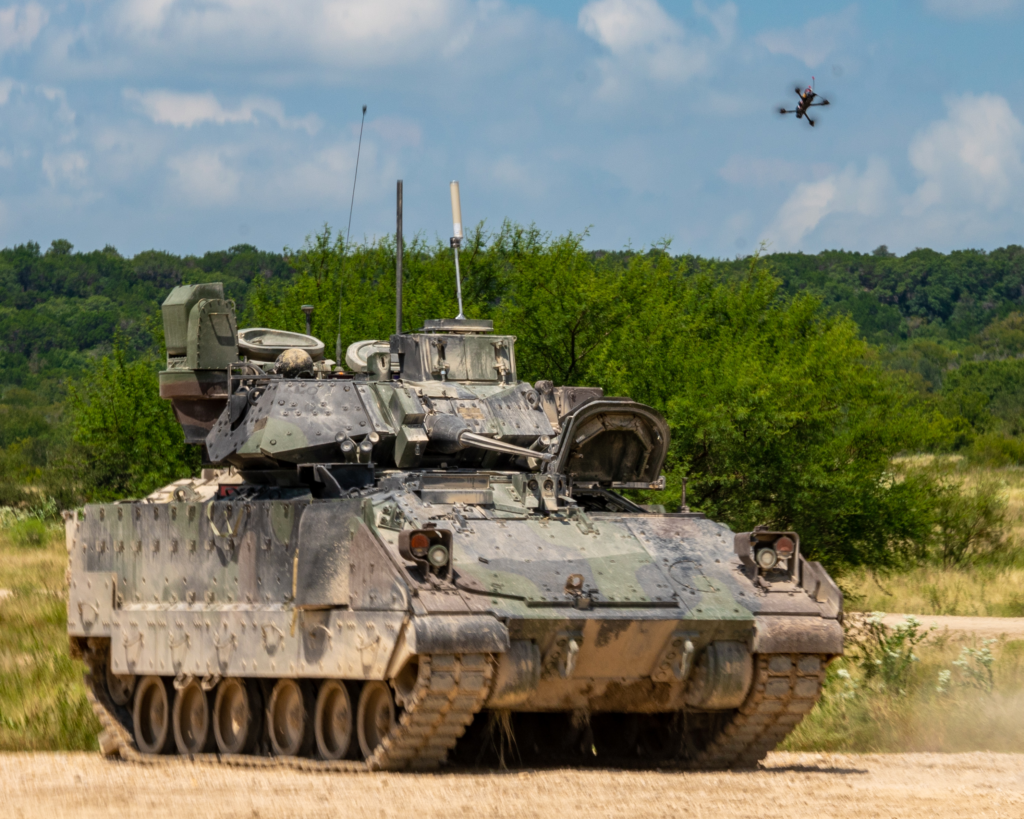Soldiers with the 1st Cavalry Division have found ways to help armored vehicles pair sensors with drones to spot enemy drones before they strike.
Col. Nicholas Dvonch, division artillery commander, and Chief Warrant Officer 2 Trenton Huntsinger spoke with Army Times recently about the progress of the division’s experiment.
The soldiers have taken passive sensors — the size of a baseball home plate — and mounted them on armored vehicles to detect enemy drones and pass that information back to their air defense element.
That’s created an air picture 3.5 kilometers in front of them, giving the vehicles about a 45-second warning for their airspace, Huntsinger said.
“I see every implement you’re going to fly at me,” Huntsinger said. “Creating a 45-second buffer, directed energy, microwave, lead in the air — whatever we need to shoot those down.”
The move is restoring fires and maneuver on the offense, Dvonch said.
Now they’re figuring out the data transport problem, bringing the information into a command-and-control system not only to detect but to also engage any objects in the airspace as they move, Dvonch said.
“When you can see all enemy air tracks at the same time to create a common air picture, adjacent units can see what’s happening to your left and right,” Dvonch said.
The next steps will include linking kinetic and nonkinetic systems to the loop to strike those enemy drones.
Soldiers will test radio frequency detection to drive systems on the M1 Abrams to turn on other systems, activating sensors for 15 seconds at a time. But it will be autonomous, with no human needing to touch the system, according to Huntsinger.
“Once this is successful, we’ll do the same thing with a camera,” Huntsinger said. “An infrared camera on the move to lock on. If I can do that, then I can get a kinetic weapon system to lock on.”
The goal is to engage any threat up to one kilometer away.
“If you’re a tank crew and we’ve done our job, then you have a method to detect and defend against group I drones,” Dvonch said, referring to the military’s grouping of the smallest drones.
Todd South has written about crime, courts, government and the military for multiple publications since 2004 and was named a 2014 Pulitzer finalist for a co-written project on witness intimidation. Todd is a Marine veteran of the Iraq War.

